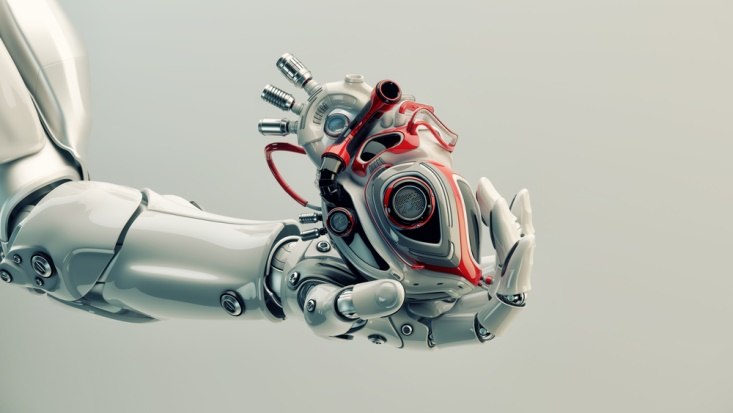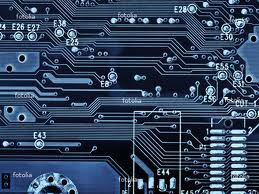BIO - ROBOTICS
WHAT IS BIO - ROBOTICS???...
Bio robotics is an interdisciplinary science that combines the fields of biomedical engineering, cybernetics, and robotics to develop new technologies that integrate biology with mechanical systems to develop more efficient communication, alter genetic information, and create machines that imitate biological systems.

Biologically-Inspired Robotics is part of a body of work at the intersection of biology and robotics.
Bio-robotics is an emerging discipline that
merges biomedical engineering and robotics.
It is the science and engineering of
robotics applied in the Biomedical field,
with the development of biomedical
devices for surgery and rehabilitation,
as well as with the modeling of biological
systems. In this sense, bio robotics is also
the construction of physical models of
the biological systems, as bio inspired
and bio mimetic robots. Although most
technologies are derived from robotics
at large, bio robotics possesses some
distinguishing features in terms of
methodology of design that deserve
to be approached apart from
robotics.
CLICK HERE FOR WIKIPEDIA RESULTS
WHY BIO - ROBOTICS???...
In its wake, Bio robotics essentially allows robotics to be a substantial substitute for biological organism in a chemical as well as a mechanical capacity. Bio robotics replicates the biological understanding of living organisms and reproduces their characteristics through artificial means.
HOW BIO-ROBOTICS HELPS HUMANS..
Bio robotics is subdivided into faculties of bio-mechanics and neural-engineering which facilitate rehabilitation engineering as well as wearable and implantable technologies, and micro- & nanotechnologies. Different technologies are at different stages of experimentation with some at human trial stages while others at the verge of being mass produced and marketed.
Biologically inspired robots are being worked upon to allow biologists and scientists to create better robots than we have traditionally. This means that the performance will provide an improved function. Sub fields will be created in robotics and robots will become specialized in, say, artificial skin sensing. A good example is the work of Italian scientists in making prosthetic skin pads for diabetics.
Researchers are also working on haptics; anything concerning the sense of touch. In addition to providing prosthetic sensation devices, the field of haptics in Bio robotics opens up possibilities in surgical procedures. It can improve precision by allowing surgeons to virtually sense how deep an incision needs to be made.
Microchips are already being used in safety and security divisions to monitor activities of individuals such as prisoners. For this, as well as the medical applications, scientists from the University of Illinois are working in collaboration with colleagues from Singapore on refining these chips into micro-electronics. The refinement process aims at making these thinner and irritation free. Additions are being made to the monitoring function of these electronics; the intention is to add wide ranging applications such as transmission to make it function like a human-computer interface.
INITIAL EFFORTS AND STRATEGIES MADE BY BIO-ROBOTICS...
BIO-MECHANISM -
NEURAL ENGINEERING -
Neural engineering employs the quantitative and statistical study of the function of the brain. By manipulating and interfacing the nervous system, neural engineers develop an understanding that can be utilized to help the humans. By creating computational models down to a single neuron, engineers are exploring and experimenting new ways to create an interface between man-made technologies and the neural tissue. This method of experimentation comes under the domain of brain-machine interfacing. Neural engineering and brain-machine interfacing when combined with prostheses such as a prosthetic arm have allowed scientists to come up with what is known as The Bionic Arm.
Amputees have to suffer from a sensation known as phantom pain for a long time after their surgery. This is because the nerves from the spinal cord come to the shoulder of a person with an amputated arm. The sensation of having or moving an arm stays as the brain is not used to the absence of the arm and it continues to send signal through the neurons to be received by the arm. Scientists utilize these impulses through the study of neural engineering to allow electrodes in the prosthetic arm to detect these impulses. This eliminates the extensive process of rehabilitation that amputees have to go through by eliminating the actual learning curve with regards to the prosthesis. An additional control is provided with simple press buttons that can be incorporated in the patient’s shoes. These prosthetics are inclusive of touch and pressure sensitivity, position as well as haptic perception owing to the advancement in neural interface which allows the provision of cognitive feedback.
INTERACTIVE THERAPY -
Apart from the cognitive and involuntary movements of the human body, most functions are learned through ‘muscle memory’; a term referring to the repetition causing learning of a movement through the practice of the brain sending signals through the neurons to the respective muscles. Several brain injuries cause muscles to suffer from permanent or a temporary form of amnesia. Interactive therapy is trying to provide a solution for this problem with the use of Bio-robotics. Virtually interactive environments are designed to rehabilitate patients suffering from muscular amnesia. Interfacing with these environments supplements traditional methods of therapy by providing the muscles with an environment that has been distorted to facilitate the learning of the muscle to retain proper functioning. Further facilitation allows these systems to provide therapy to children suffering from cerebral-palsy, using gaming software that are appropriate.
WEARABLE AND IMPLANTABLE TECHNOLOGIES -
Neural engineering has been in use in the form of cardiac pacemakers for a very long time now. By disrupting or stimulating the neuro-circuitry, robotics other implantable devices like the cardiac pacemakers are being developed to monitor neural disease such as Parkinsonism, epilepsy and depression. High frequency electrical stimulation is in the experimental stages for being utilized to inhibiting electrical signals. This is researched to be useful in the application of reversible and localized anesthesia as well as bladder control or any other hard to control neuron functions particularly in the case of paralysis.
VISUAL PROSTHESIS -
Visual prosthesis is also a result of neural engineering. In cases where the neural circuitry as well as the visual perception of the brain is still functioning, the retina that is responsible for sensing light damaged owing to age related or other degenerative loss, eye-sights can be restored. The technology that is being worked on replicates the function of a retina. It currently employs about a hundred electrodes but further experimentation would allow capturing of better resolution imagery.
MICRO AND NANO TECHNOLOGY -
Micro and nanotechnology is the section of Bio-robotics that allows scientists to produce robotic solutions that can prove to be biological replacements down to the level of neurons. It deals with the miniaturization of devices as well as mechanical processes.
These miniature robots are effectively being experimented for their use in repairing DNA and delivering drugs other than restoring sight and innumerable other applications.
SUSTAINED RELEASE DRUG DELIVERY -
Sustained-release drug delivery is an outcome of nanotechnology in Bio-robotics. It allows implants to deliver drugs for a long period of up to five years using winding paths on a microscopic scale by reducing the rate of transmission of the drug molecules.
With additional technologies, sustained-release drug delivery systems can be used to monitor drug transmission through external devices such as a microchip that can regulate the dosage of insulin by determining levels of glucose in the patient’s blood.
TARGETED DRUG DELIVERY -
A major concern in the field of medicine is the side effects caused by various drugs. In an attempt to limit the effects of a drug to its target in order to reduce and eventually eliminate the side effects, researchers are using Bio-robotics to develop targeted drug delivery systems. This is done by adding to the sustained release drug delivery by encapsulating drugs in a polymer mould that fits only in the target cells. The study of the complexity of microbiology allows scientists to use the specificity of biological organisms in engineering robotics to dexterity that works in a lock and key mechanism between the drug and the targeted cell.
MICROFLUDICS -









Nice information 👍👍
ReplyDeleteInformative... Nice content
ReplyDeleteNice work,informative
ReplyDeleteVery Useful
ReplyDeleteClassy
ReplyDeleteContent 👍🙌
ReplyDeleteExcellent content👍
ReplyDeleteExcellent information
ReplyDeleteNice👍👍
ReplyDelete